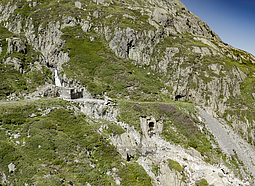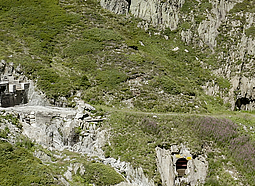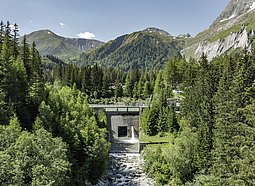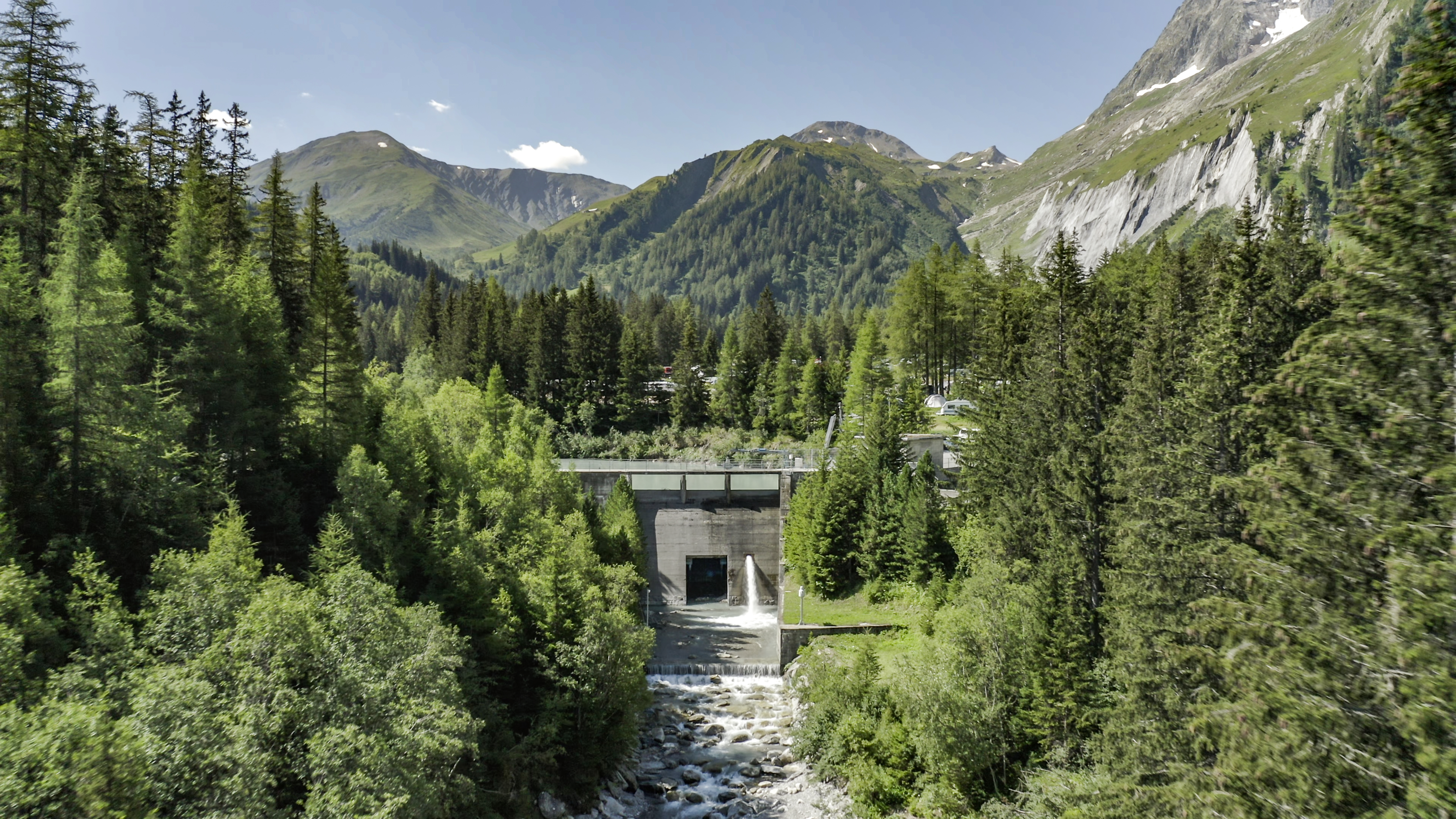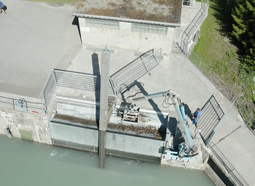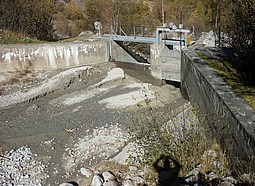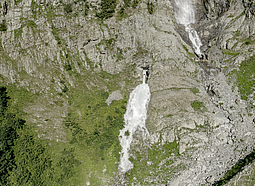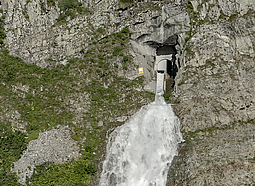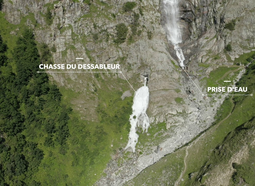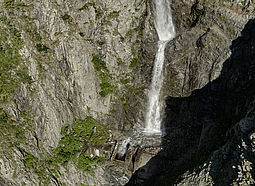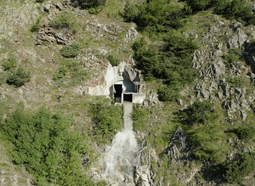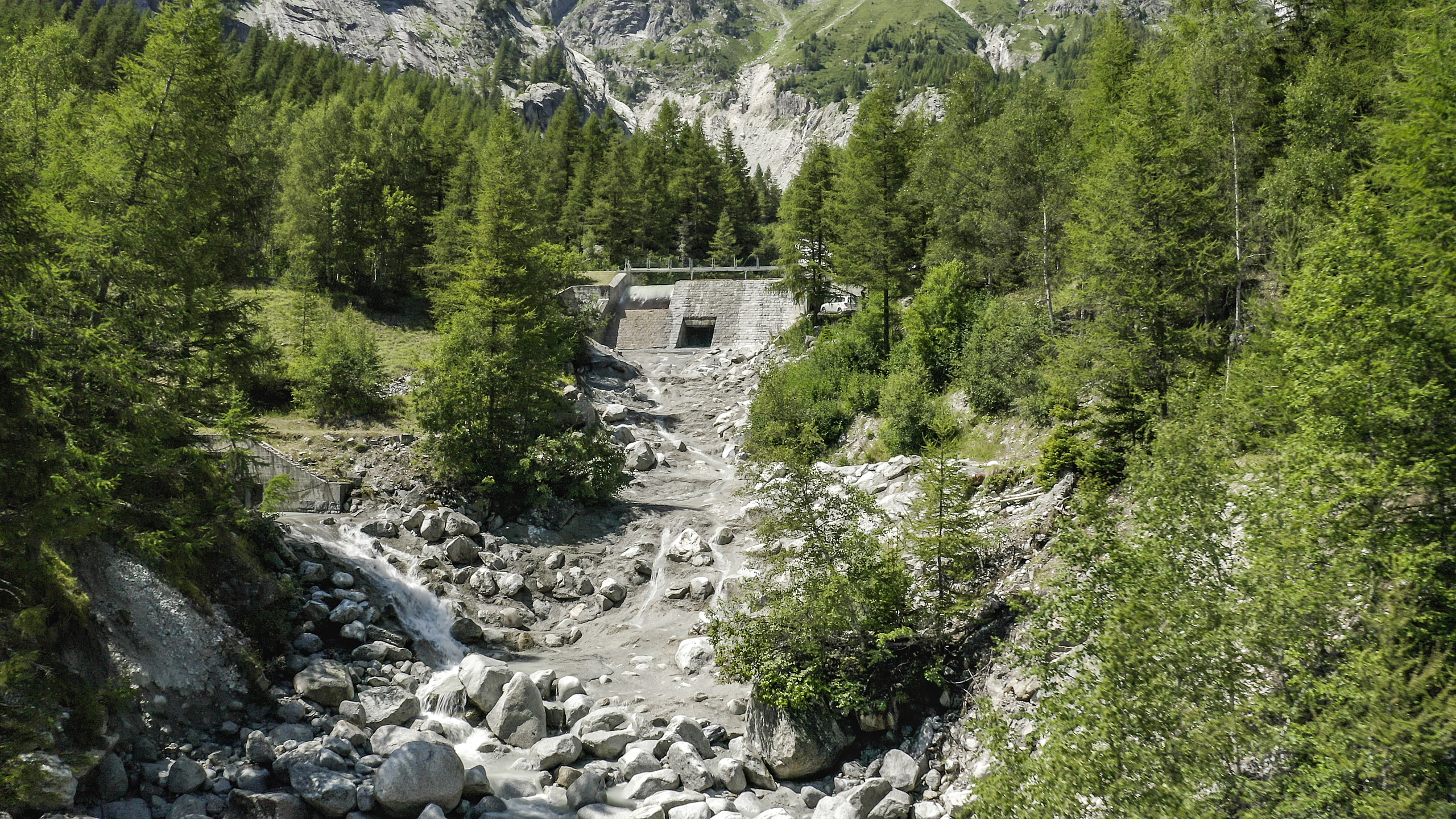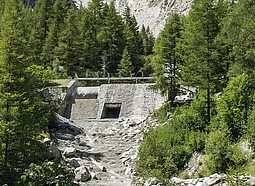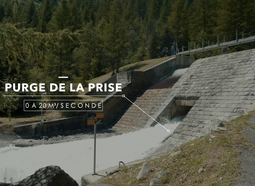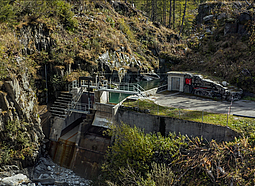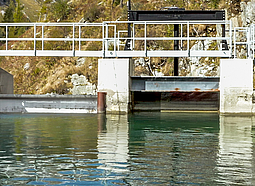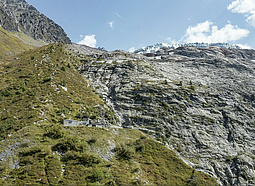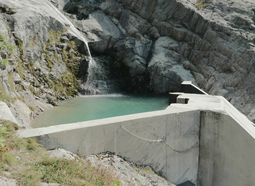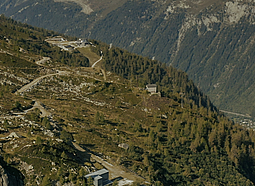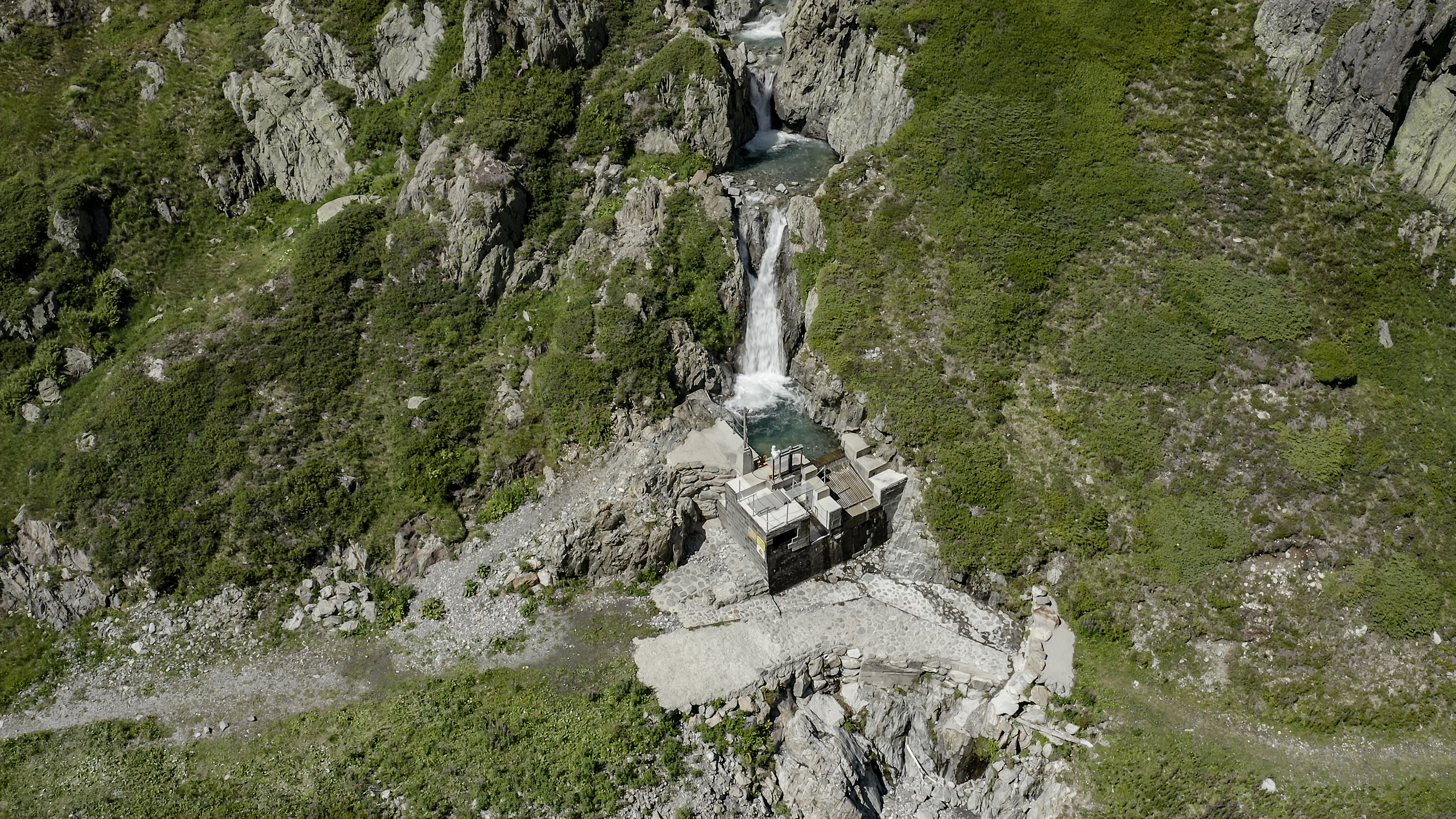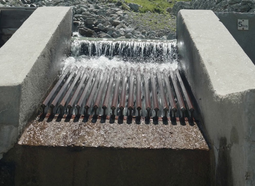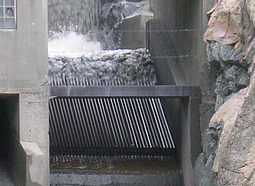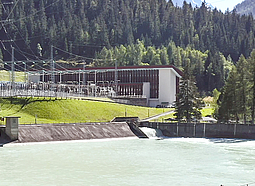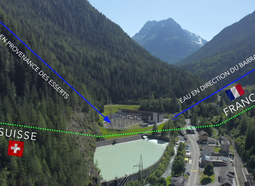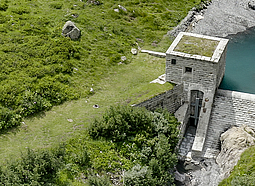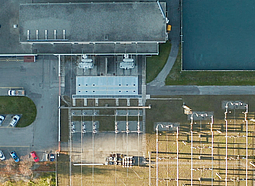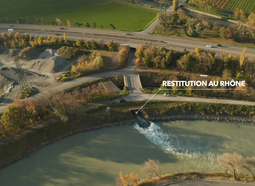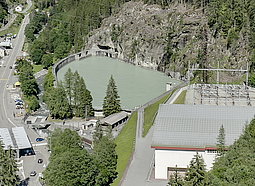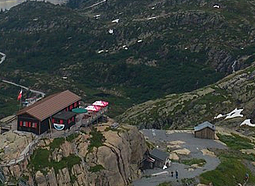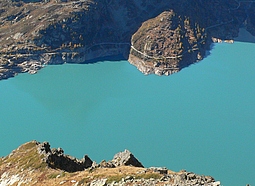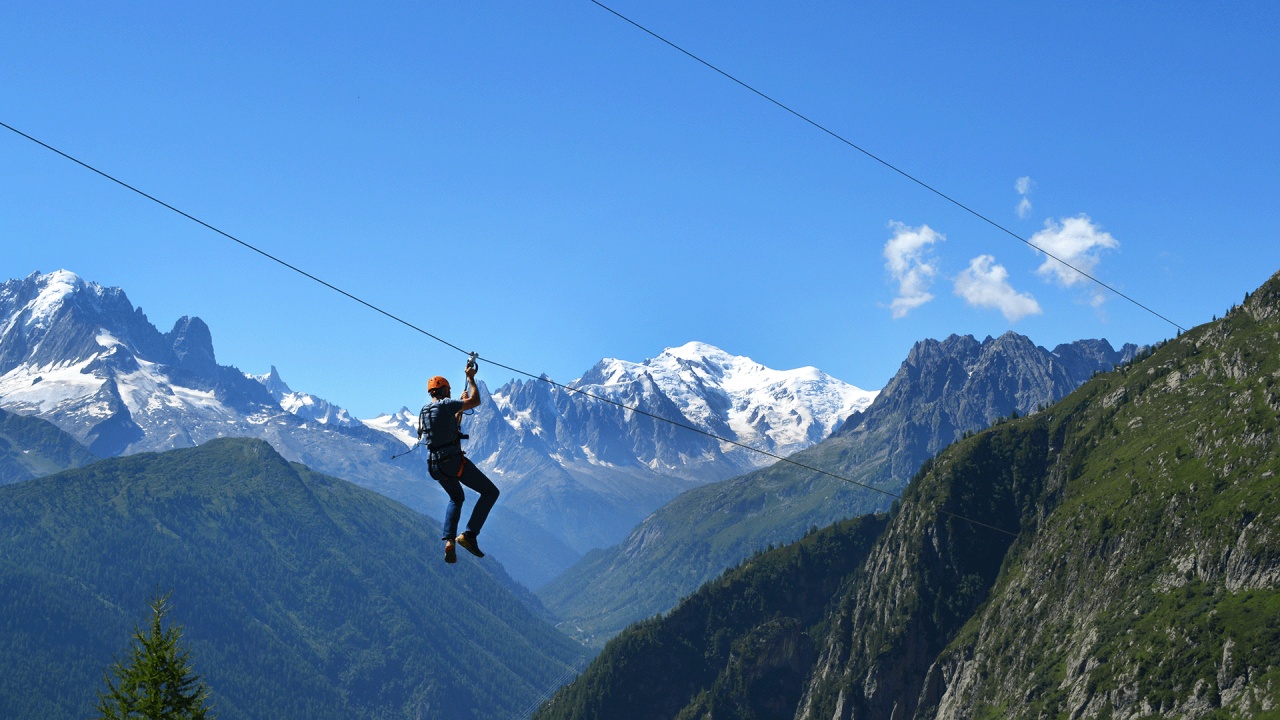Three types of hydropower plant are in use in Switzerland: run-of-river power plants, storage power plants and pumped storage power plants.
Storage power plants
The reservoirs are usually artificial bodies of water with dams or dykes that hold back water to be used for generating electricity in times of increased need.
Storage power plants exploit the difference in altitude between the reservoir and power plant to produce electricity quickly and flexibly. They can adapt their production according to daily electricity needs and provide operating reserves.
The energy cannot be stored on the grid. In other words: production by power stations must match the quantity of electricity consumed on the grid at all times. When an electrical device is turned on, a power plant must simultaneously produce the energy required to operate this device. Once it has been turned off, a power station needs to limit its production accordingly.
Storage power plants are able to react immediately to produce more or less electricity at any time in order to maintain grid stability.
Storage power plants play an essential role in our energy future.
Over the years to come, more and more wind turbine farms and photovoltaic installations will be linked to our energy grid, but these do not provide energy in a such a dependable manner.
Storage power plants cover peak load. They can intervene quickly to produce the power required when there is no wind, or overcast skies prevent photovoltaic installations from producing sufficient energy. Storage power plants are thus important in maintaining voltage on the high-voltage grid and providing ancillary services.
Run-of-river power plants
Run-of-river power plants are situated on rivers and streams and consist of a dam and turbine room. They use the elevation along the waterways to generate electricity. The flow of the rivers is exploited directly and continuously. Production thus depends on the quantity of water available and difference in water level.
It is subject to strong seasonal fluctuations and is always difficult to regulate. Run-of-river power plants can be designed as low- or high-pressure facilities. Low-pressure facilities are suitable for flat areas with low elevation and large amounts of water. High-pressure facilities are characterised by a significant height difference and a relatively small amount of water.
This makes them suitable for mountain rivers. In a traditional run-of-river power plant, the turbine room is placed directly next to the dam. Diversion power stations consist of a longer diversion canal or tunnel, with the dam often sited several kilometres upstream. They generally have a greater drop, but also longer sections with residual flow.
As run-of-river power plants produce energy 24 hours a day, they are used to cover base load.
Pumped storage power plants
Unlike simple storage power plants, pumped storage power plants not only produce peak energy, but can also store excess electricity from the grid when consumption is low.
To do so, pumped storage power plants have an upper reservoir and a lower reservoir from which the water can be pumped to the upper lake after passing through the turbines.
Benefit: a pumped storage power plant can take advantage of the excess power produced by e.g. wind turbines or photovoltaic installations to store water and use it later to produce electricity.
However, pumping the water consumes around 20% more energy than it produces afterwards by passing through the turbines.
As such, pumped storage power plants do not produce additional electricity but they increase the available power at any given time.
They thus make an important contribution to the security of supply and the stability of the grid.
Example:
Pumped storage power plants are expensive to build and their profitability is therefore highly dependent on price differentials. Their great flexibility allows them to earn additional revenue through the provision of ancillary services, which are essential for maintaining the stability of the grid.

